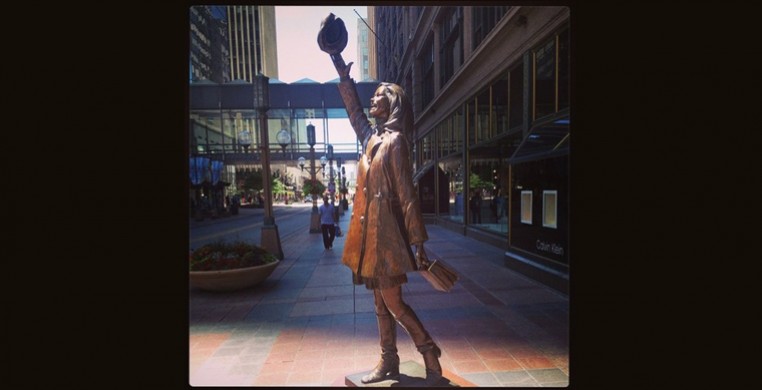Dance/USA, the annual convergence of many of dance’s greatest minds, settled smack in the middle of the country last weekend, and it’s safe to say that Minneapolis is overflowing with dance. In a dance-positive state that is thriving on corporate sponsorships and seemingly ample funding, there was perhaps no better place for this year’s Dance/USA conference.
Chicago’s Sara Ziglar was a first-timer at the conference, as evidenced by the blue ribbon attached to the end of her lanyard. Ziglar attended the conference as a representative of Red Clay Dance, and also as one of 10 PIVOT artists. PIVOT is a program designed by Audience Architects (AARCH) to serve a diverse group of individual dance artists. AARCH provided travel stipends to select members of the PIVOT network for the Dance/USA conference, and this is how Ziglar found herself there. “I came into the conference with the approach of gaining knowledge and connections that would help me make choices around building out a sustainable career as an individual artist while acting as an ambassador for Red Clay Dance. As a first time attendee, I was overwhelmed by the experience. Most of this feeling came from feeling isolated and alone leaving me without a sounding board to download and unplug from each day’s events.”
Dance/USA has been criticized for the lack of representation by people of color and independent or small budget artists. Despite a valiant effort to address diversity in break out sessions over the past couple years, the conference still regularly skews toward high-budget companies. In a session titled The State of the Field, Dance/USA presented data on financial trends over a five year period from 2008-2012 alongside a representative from the Cultural Data Project (CDP). While 30% of CDP’s data came from companies with operating budgets of less than $100,000, Dance/USA’s data did not include any from under this threshold. In doing so, the nation’s leading service organization for dance is not just excluding a relatively huge sector of the dance community, but one that trends toward culturally diverse organizations. Ziglar’s experience echoed this sentiment: “Where are the voices of color?” she said. “Where are the younger/emerging dance artists? Where are the people that look like me? Why are we not more involved with this organization?”
These are valid questions. Additional break out sessions failed to address the smaller organizations, with the dividing line between big and “small” placed at $2.9 Million, but perhaps Dance/USA hasn’t had to address artists operating at budgets 1000 times smaller. The conference is expensive, and representatives from those below $100K companies don’t typically attend (unless, perhaps, the conference is in their home city). Though the role Audience Architects played in funding PIVOT artists got them to Minneapolis, the gap in representation from independent artists may have contributed to Ziglar’s feelings of isolation. She quickly learned, however, that big companies face many of the same challenges she does, just on a larger scale - more zeroes, so to speak. “This knowledge left me feeling less isolated, but with many questions. How does the individual artist successfully address issues that large companies still grapple with? Is the traditional business model for artists obsolete?”
Challenges aside, the tone of this year’s conference was decidedly positive. The State of the Field showed us that though we haven’t yet recovered entirely from the recession, the trends are pointing upward. In the past, the closing plenary has turned into a bona fide grumble fest with lots of complaints and few solutions. Saturday’s final panel was a light and positive discussion on gravity pull - what keeps us centered, and what pulls us off balance.
“Overall I found myself with more questions than answers,” said Ziglar, “and completely satisfied with the decision to participate in this year’s conference. It gave me a better understanding of the scope of the field and what it will take to carve out a career built to last. I want to be more involved with Dance/USA as a result of the conference and hope to see more of my contemporaries become involved. I would say my biggest takeaway was that of courage and commitment to moving forward, in my art and in my business.”
Turning the corner of 7th Street onto Nicolette Mall in downtown Minneapolis, very close to the hub of the conference at the Cowles Center, Dance/USA attendees are greeted by a beacon in bronze. That's right. It's a life-sized statue of Mary Tyler Moore. Miss Stick-to-itiveness herself, with hat extended into the sunshine, is a reminder to us all that we’re gonna make it after all. How fitting.
Lauren Warnecke

